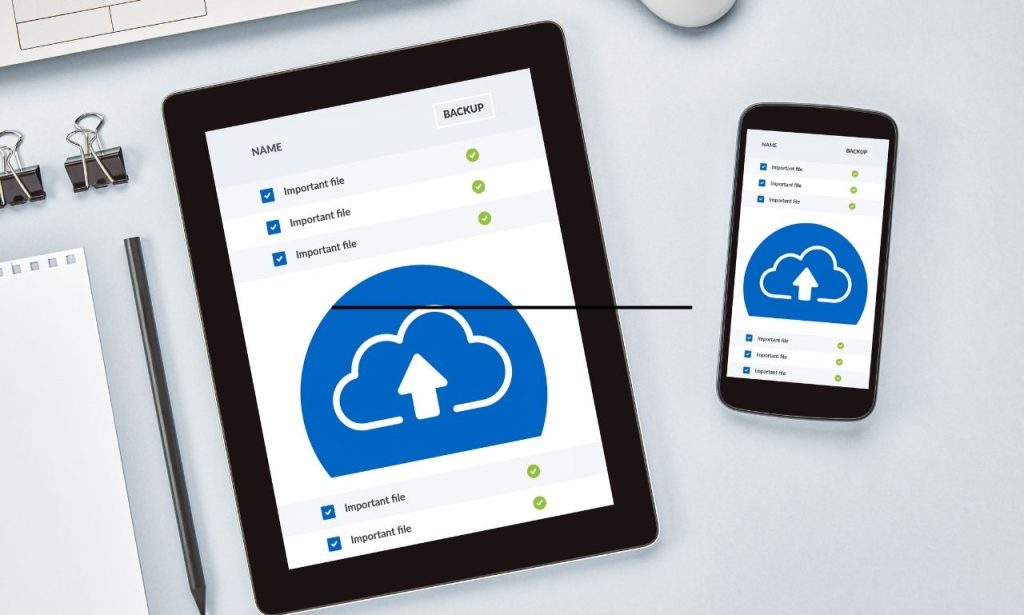Cloud storage has completely changed how businesses handle their data. Companies now rely on these services regardless of their size. But this transition brings new challenges in cost management. Unexpected cloud bills shock many organizations each month. They’re often paying for resources nobody uses. One thing keeps showing up across the board. Most businesses waste 30-40% of their cloud storage budget. We’re talking thousands—sometimes millions—down the drain. You can avoid this waste entirely. The right cost optimization approach can slash your expenses dramatically. The best part? You won’t sacrifice performance or reliability. In fact, when you optimize costs, overall efficiency typically improves. Let us explore tips on how to achieve cost efficiency in cloud storage.
What is Cloud Cost Optimization?

Cloud cost optimization means cutting your cloud spending without compromising performance. It’s about finding and eliminating waste in your environment. You want maximum value from every dollar you spend on cloud services.
This goes beyond just hunting for the cheapest provider. Real optimization balances cost against your actual needs. You need the right services at appropriate pricing tiers. Your resources should match your actual usage patterns—nothing more.
You can’t just optimize once and forget about it. Cloud requirements change as your business evolves. What works perfectly today might waste money tomorrow. Regular assessment keeps your costs in line with business needs.
Many companies treat optimization as a one-off project. That approach rarely works long-term. Success comes when you make it an ongoing practice. Smart organizations build it into their regular operations.
Proper cost optimization touches everything in your infrastructure. It affects storage choices, data lifecycle policies, and access patterns. It extends to network settings, backup approaches, and security configurations.
Cloud Cost Optimization vs Cloud Cost Management
People mix up cloud cost optimization and management all the time. They sound similar but do different jobs. Understanding this difference helps you implement both correctly.
Cost management focuses on tracking where money goes. It tells you who spent what and when. This visibility helps with budgeting and departmental charges. Finance teams need this data for planning.
Management tools monitor spending against your budget limits. They send alerts when costs approach preset thresholds. They generate reports for accounting purposes. These features support financial governance requirements.
Cost optimization actively reduces what you spend. It spots inefficiencies and eliminates waste. Instead of just tracking costs, you’re actually lowering them. This requires technical knowledge and architectural changes.
Management is primarily financial in nature. Optimization blends technical and financial aspects. Management shows where money goes. Optimization shows how to spend less. They work best when used together.
Your optimization efforts need the baseline data from cost management. Without accurate tracking, you can’t measure improvements. Combining both disciplines creates a complete framework for controlling costs.
Reasons Why You Should Prioritize Cloud Cost Optimization
Gain Visibility into Cost Drivers
Knowing exactly what drives your cloud costs gives you a massive advantage. Most companies lack this insight. They see the total bill without understanding what’s behind it. This blindspot makes smart decisions impossible.
Good optimization tools break down your expenses in detail. They show costs by service, team, and project. You’ll discover which workloads eat the most resources. This reveals opportunities you’d never find otherwise.
Last year, I worked with a software firm whose cloud bills had doubled. Their monthly costs kept climbing without explanation. After implementing proper analysis, we found something shocking. A forgotten development environment generated 40% of their storage costs.
Nobody had accessed this test data in months. The team had completely forgotten it existed. Simply removing this unused storage saved them $4,000 monthly. Only proper visibility made this discovery possible.
This kind of insight reveals spending patterns across your organization. You might find certain teams consistently over-provision resources. Or discover premium storage used for non-critical backups. These findings enable targeted improvements.
Improve Financial Predictability
Cloud bills can swing wildly from month to month. This unpredictability drives finance teams crazy. It makes budgeting nearly impossible. Nobody wants financial surprises, especially not your CFO.
Solid optimization strategies stabilize what you spend. They smooth out those variations. This makes your budgeting more reliable. Your finance team can forecast with actual confidence.
Commitment plans and reserved instances offer substantial discounts and lock in consistent pricing over time. This transforms unpredictable costs into fixed expenses, stabilizing your cloud bill.
Predictable costs also make growth decisions easier. You’ll know the financial impact before expanding, aligning your technical and business planning and preventing nasty financial surprises when scaling up.
Smart companies set up cost guardrails during optimization. These controls prevent unexpected spending spikes and require approval for resources above certain limits. This adds another layer of predictability to cloud expenses.
Justify Service Investments
Business leaders constantly want proof that cloud investments deliver value. They need solid justification for current and future spending. Without this evidence, your cloud initiatives might lose support. Budget cuts often follow.
Cost optimization creates clear metrics that show performance. It connects spending directly to business outcomes. This helps quantify your actual return on investment. The data justifies continued funding for cloud projects.
A retail client of mine couldn’t justify their expensive cloud migration. Their executive team questioned the high costs. We implemented detailed optimization and tracking. This revealed their actual cost per transaction.
The numbers proved cloud processing cost 60% less than their old data center. This concrete evidence secured continued executive support. The project moved forward with full backing. Cost optimization provided the proof they needed.
This justification becomes crucial during tough budget reviews. Having optimization data ready demonstrates fiscal responsibility. It shows you’re managing resources efficiently. This builds credibility with financial decision makers.
How to Achieve Cost Efficiency in Cloud Storage

Shared environments put multiple workloads on the same resources, boosting utilization and cutting waste. This approach works exceptionally well for development and testing and can dramatically slash cloud storage expenses.
Environment sharing groups similar workloads with compatible requirements. Instead of separate storage for each application, they share resources, eliminating duplicate storage and reducing overhead costs.
I recently helped a healthcare software vendor implement this approach. They previously created separate environments for each client demo. They cut storage costs by 65% by building a shared demo infrastructure. Their performance metrics improved too.
Proper isolation techniques are needed to make sharing work. For security, partitioning and access controls are used. Resource quotas prevent one workload from impacting others. These guardrails make sharing safe and effective.
This approach does require more upfront planning. You’ll need to document compatibility requirements carefully, and teams must coordinate maintenance and upgrades. But the massive cost savings justify this extra effort.
Leverage Reserved Instances for Long-Term Savings
Committing to specific usage levels enables you to obtain substantial price reductions through reserved instances. Cloud providers deliver their most affordable rates to clients who sign up for extended-term agreements. Customers can achieve up to 70% price reduction through this approach. The longer the term of your commitment, the larger the discount will be.
This specific procedure governs the operation of reserved instances. A reserved instance agreement requires you to use particular resources for one to three years. Storage, computing, and other services are included in this arrangement. The payment method allows customers to pay upfront, partially upfront, or through monthly installments.
Through this approach, my manufacturing client obtained yearly savings worth $230,000. Their study showed they required predictable storage quantities. The three-year reservation term allowed them to secure their best possible savings rate. They saw ROI almost immediately.
Before making reservations, you should conduct a detailed evaluation. Your first step should involve selecting workloads that demonstrate stable patterns that can be predicted easily. The production environments should be your focus because they will remain relatively stable. Demand pricing should apply to workloads with variable requirements.
Most organizations fail to achieve maximum savings from their reserved instances. The investment benefits from periodic audits to achieve maximum returns. Reserve your shift capacity for different periods based on your changing requirements. You should take advantage of reservation marketplaces provided by your provider to sell any unused commitments.
Invest in DDoS Protection for Critical Services

DDoS attacks can cause unexpected cost spikes. Traffic surges during attacks consume additional resources, trigger auto-scaling, and inflate data transfer fees. Protection services prevent these financial surprises.
DDoS protection acts as a cost optimization strategy. These services filter malicious traffic before it reaches your resources. They absorb attack volume without passing costs to your environment, preventing billing shocks during security incidents.
A financial services client experienced massive cost spikes during attacks, with each incident adding thousands to their monthly bill. After implementing proper protection, these costs vanished completely. The protection service paid for itself within months.
Beyond direct savings, protection prevents costly service disruptions. Downtime usually costs more than the direct cloud expense increases, making protection even more valuable from a total cost perspective. Factor in both elements when choosing a solution.
Most major cloud providers offer built-in DDoS protection services. Third-party options provide enhanced capabilities. Compare pricing models carefully before deciding. Some charge based on clean traffic, others on total volume. This difference matters for your bottom line.
Conclusion
To achieve actual cost efficiency in cloud storage, you must establish deliberate strategic measures. The achievement of cost-efficient cloud storage requires technical skills combined with financial management. The methods operate equally well for AWS, Azure, Google Cloud Platform, and other main cloud providers. All organizations, regardless of their size, can implement these approaches.
Your optimization journey requires an extensive evaluation as its starting point. Determine the current locations of your financial resources. Search for opportunities that produce quick financial returns through cost reductions. Use initial cost-saving achievements to create a positive momentum.
The optimization process continues indefinitely. The prices and services offered in cloud platforms undergo continuous modification. Constant review procedures help you sustain operational efficiency from the beginning. Activities based on optimization should become a continuous part of your organizational operations.
Money savings from optimization bring additional advantages that surpass financial benefits. You gain predictability, visibility, and solid justification for cloud investments. These advantages strengthen your entire cloud strategy. They help convince business leaders to support your initiatives.
Take one simple step today: Review your unused and unattached storage. This single task often uncovers significant waste. Use those savings to fund more comprehensive optimization work.
Also Read: Top 9 Essential Cybersecurity Practices to Safeguard Your Data
FAQs
Forgotten resources typically waste the most money. Development environments and test data often stick around after projects end. Regular audits can find and eliminate these expensive ghosts.
Monthly reviews work best for most companies. Quarterly is the absolute minimum frequency. Set up automated alerts for unusual spending between reviews.
Absolutely. Small businesses often see the biggest percentage savings. Their cloud environments typically have more obvious inefficiencies. These techniques work for organizations of any size.
It depends entirely on your specific usage patterns. Compare providers based on your actual workloads. Consider how you access data and integration requirements. The cheapest option varies for each situation.
FAQs
What is the biggest source of cloud storage waste?
Forgotten resources typically waste the most money. Development environments and test data often stick around after projects end. Regular audits can find and eliminate these expensive ghosts.
How often should we review our cloud storage costs?
Monthly reviews work best for most companies. Quarterly is the absolute minimum frequency. Set up automated alerts for unusual spending between reviews.
Can small businesses benefit from cloud cost optimization?
Absolutely. Small businesses often see the biggest percentage savings. Their cloud environments typically have more obvious inefficiencies. These techniques work for organizations of any size.
Which cloud provider offers the most cost-effective storage?
It depends entirely on your specific usage patterns. Compare providers based on your actual workloads. Consider how you access data and integration requirements. The cheapest option varies for each situation.
How do we start our cost optimization journey?
Begin with a comprehensive cloud cost assessment. Most providers offer free tools for this purpose. Look first for unused resources and right-sizing opportunities. These deliver quick savings with minimal effort.


